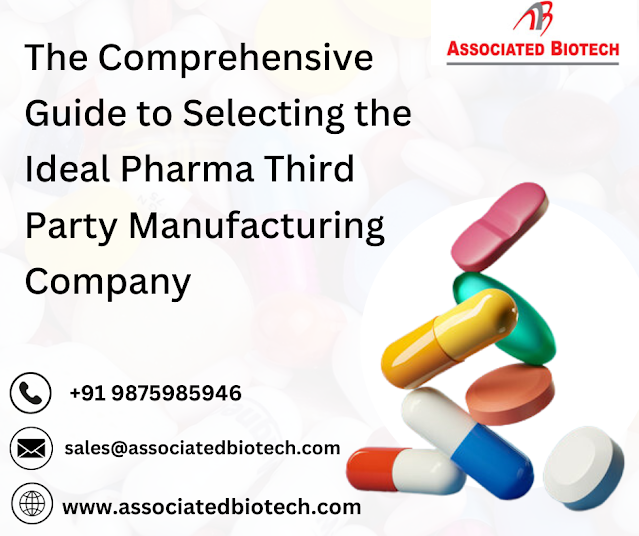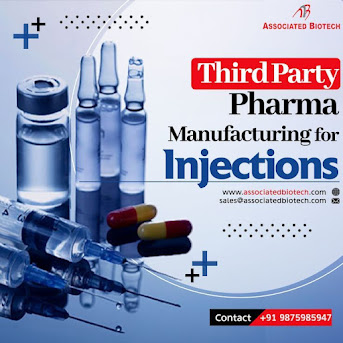The Comprehensive Guide to Selecting the Ideal Pharma Third Party Manufacturing Company
The pharmaceutical industry functions in an intensely competitive and meticulously regulated arena, placing precision, reliability, and efficiency at the forefront. Recently, numerous pharmaceutical companies have opted for third-party manufacturing as a strategy to streamline their operations, reduce costs, and redirect more resources toward research and development endeavors. The decision to choose the right Pharma Third Party Manufacturing Company holds immense significance and can wield a profound impact on the prosperity of your business. This comprehensive guide is meticulously crafted to lead you through the necessary steps and vital considerations, equipping you to make an informed and astute decision.
Why
Opt for Third-Party Manufacturing?
Before we
delve into the selection process, it is imperative to understand why
pharmaceutical companies opt for third-party manufacturing:
- Cost Efficiency: Outsourcing manufacturing can lead to significant cost reductions by eliminating the need to invest in costly infrastructure and equipment.
- Expertise: Third-party manufacturers frequently possess specialized knowledge and expertise in pharmaceutical production, ensuring the production of high-quality products.
- Focus on Core Competencies: By outsourcing manufacturing, pharmaceutical companies can direct their focus toward research, development, and marketing, rather than being bogged down by production activities.
- Scalability: Third-party manufacturers possess the agility to swiftly adapt to changing production requirements, facilitating efficient scaling as necessary.
Having established the benefits, let's delve into the steps to identify the most suitable third-party manufacturing company:
Step
1: Define Your Requirements
Before
embarking on your search, establish clear and concise specifications for your
pharmaceutical product. This includes the formulation, dosage form, batch size,
and adherence to regulatory guidelines. These specifications will serve as the
foundation for identifying potential partners.
Step 2: Research and Shortlist
Initiate
your quest by conducting extensive research to identify prospective third-party
manufacturers. Utilize industry directories, attend trade shows, and leverage
online platforms to compile a list of potential candidates. Evaluate factors
such as location, reputation, infrastructure, and regulatory certifications.
Step 3: Assess Regulatory Compliance
Verifying
that the third-party manufacturer complies fully with all applicable regulatory
requirements, such as Good Manufacturing Practises (GMP) and FDA approvals, is
crucial. The safety and quality of your products depend on this adherence to
legal requirements.
Step 4: Evaluate Quality Control Processes
Examine
the manufacturer's quality control processes, encompassing testing
methodologies, documentation procedures, and quality assurance protocols. A
robust commitment to quality is imperative for maintaining consistent, secure,
and effective product production.
Step 5: Review Production Capacity
Evaluate
the third-party manufacturer's production capabilities, ensuring they can
accommodate your current and future production requirements. It is essential to
verify that they can handle your batch sizes and meet your production
timelines.
Step 6: Scrutinize Technology and Equipment
Cutting-edge
equipment and technology are pivotal in pharmaceutical manufacturing. Confirm
that the manufacturer utilizes state-of-the-art equipment and remains abreast
of industry advancements.
Step 7: Assess Supply Chain Management
A
well-structured supply chain is indispensable for punctual production and
delivery. Scrutinize the manufacturer's supply chain capabilities, encompassing
the sourcing of raw materials and effective logistics management.
Step 8: Consider Location
The
proximity of the third-party manufacturer to your company's headquarters may
play a role in your decision-making. A closer location can lead to reduced
shipping costs and facilitate smoother communication.
Step 9: Request References and Facility Visits
Seek
references from the manufacturer and connect with their clientele for feedback.
If feasible, plan visits to their facilities to gain firsthand insights into
their operations.
Step 10: Negotiate Terms and Contracts
After
narrowing down your selection, initiate negotiations and draft a comprehensive
contract. The contract should outline all aspects of the partnership,
encompassing pricing, quality standards, production schedules, and mechanisms
for dispute resolution.
Must Read: Tips to Joining hand with Third party pharma manufacturers
Frequently Asked Questions about third party manufacturing (FAQs)
Q 1.
What does third-party manufacturing entail in the pharmaceutical industry?
Third-party
manufacturing within the pharmaceutical industry involves the outsourcing of
pharmaceutical product production to specialized manufacturing companies. This
approach enables pharmaceutical enterprises to concentrate on research,
development, and marketing, while manufacturing responsibilities are delegated.
Q 2.
What are the principal regulatory certifications to seek in a third-party
manufacturer?
Seek
certifications including FDA approval (when applicable), compliance with GMP,
ISO certifications, and any other pertinent local or international regulatory
certifications.
Q 3. Is
it essential for the third-party manufacturer to have experience in my specific
product category?
While
experience in your specific product category can be advantageous, a
manufacturer with a proven track record in pharmaceutical manufacturing, even
in different product categories, can still be a suitable partner. Evaluate
their expertise and competencies in pharmaceutical manufacturing as a whole.
Q 4. What
should be encompassed within a contract with a third-party manufacturer?
A
comprehensive contract should encompass details pertaining to product
specifications, pricing structures, quality standards, production timelines,
intellectual property rights, confidentiality provisions, and mechanisms for
resolving disputes.
Q 5. How
can I gauge the financial stability of a third-party manufacturer?
Request
financial documents such as balance sheets and income statements to assess the
manufacturer's financial stability. Additionally, consider seeking credit
references from suppliers or financial institutions with whom they have
collaborated.
Selecting
the right pharmaceutical third party
manufacturing company is a pivotal step in the success of your
pharmaceutical enterprise. By meticulously adhering to these steps and
conducting thorough due diligence, you can make an informed decision that
aligns with your company's objectives and ensures the production of high-caliber
pharmaceutical products.
Related Blogs
Third Party Pharma Manufacturers in India
Secrets to Successful Collaboration with a Third Party Manufacturer in India
Contact Details
Name: Associated Biotech
Mobile No.: +91 9875985945, +91 9875985501
E-mail: sales@associatedbiotech.com
Website:www.associatedbiotech.com
Address: 361, Phase-1, Industrial Area, Panchkula. Hayrana. Pincode – 134113



primary advantages of partnering with a pharmaceutical contract manufacturer is the potential for significant cost savings. These manufacturers operate on economies of scale, allowing them to invest in state-of-the-art facilities and technologies that might be financially challenging for individual companies. Moreover, the ability to scale production up or down based on market demand provides unmatched flexibility.
ReplyDelete